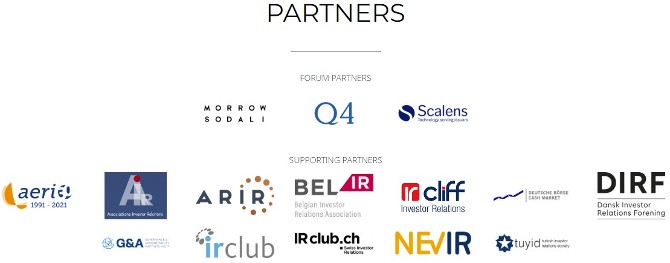‘When we’re looking at ESG and sustainability reports, I’d say the big red flags are lots of case studies, lots of qualitative information, not much quantitative information and lots of pictures,’ said Nick Spooner, climate change engagement specialist at Robeco. ‘Those are all indications that a company doesn’t have very much to say.’

Spooner was speaking as part of a panel at the ESG Integration Forum – Europe. The session aimed at shedding some light on what investors are looking for from companies when it comes to ESG and considering what can go wrong when businesses communicate their sustainability strategy to the investor community.
For Jana Jevcakova, managing director and head of ESG international at Morrow Sodali, there are three primary red flags for investors, each of them a reminder of how important it is for businesses to ensure ESG strategies are included in the company’s overall business purpose.

‘The first is when there’s no link between your purpose and your business strategy, and [that’s what happens] if you have a separate ESG strategy. I was told there’s a difference between having a sustainability strategy and a sustainable business strategy,’ she said during the session.
‘The second is when there’s no accountability for ESG at the board level – it’s one of the key things proxy advisers [pick up on]. It’s one of the key things investors look for in their custom voting policies and what they want to see is that the board has final accountability or responsibility for sustainability. The third is too many sustainable development goals.’

Sarah Woodfield, active ownership manager at Schroders, said it’s risky when companies are not coherent with their disclosures across the different jurisdictions their business operates in.
‘[Sometimes] you read a company’s annual report and it doesn’t add up,’ she pointed out. ‘I think one of the key examples of this is when the [business] disclosures are very tailored to a particular jurisdiction the firm happens to be headquartered in, but you know it has operations in other jurisdictions with less tight regulations.
‘[It’s a red flag] when you don’t see any reporting about the deforestation or biodiversity in those jurisdictions. We [as investors] tend to have an understanding of where the company’s operations are, and it sort of immediately stands out when you avoid talking about tricky jurisdictions you operate in and have exposure to.’
Demonstrating flexibility to challenges
Businesses face two types of ESG challenges: short and long term. The war in Ukraine is a clear example of a short-term challenge that forced companies to think on their feet. Regulations and broader long-term ESG commitments also force businesses to cast an eye further into the future and factor all those considerations into their strategy. But whether investors are more interested in how companies tackle short-term issues as opposed to long-term ones is not always clear.
‘You need to be thinking about the long term when you make those sorts of decisions,’ said Spooner. ‘When you’re thinking about decarbonization in particular, should it address the short-term issues or should it be around an expectation of switching to lower-carbon opportunities? We [as investors] obviously encourage the latter.’
Addressing the debate over short term versus long term, Jevcakova said companies should be mindful of the fact that investors always consider what their returns will be in 10 to 30 years.
‘On average, CEO tenure in the English speaking world is four years. Yet when you think about pension funds and long-term investors, they invest for 10, 20 or 30 years,’ she pointed out. ‘So we’ve got that tension where investors want to see the companies they’re investing in also be here in 10, 20 or 30 years and generating revenue for all of us, right? How do you deal with that?
‘[It’s all about] the engagement, the power of engagement and how you as a company create your story. Make sure it’s a story everybody’s comfortable with and that you tell it the right way. Because if you don’t tell it, someone else will.’
Dealing with ESG politicization
There is a hashtag-friendly word associated with the ESG movement: greenwashing.
Greenwashing can hurt companies, damaging their reputation. The panel looked at how companies can avoid greenwashing accusations and tackle the increasing politicization of the movement. So how can companies address the ESG backlash? Should they take a political stand?
Companies that are big enough to have significant influence are probably expected to take a stand on certain things,’ stated Jevcakova. ‘Do investors expect that? I think some do but, again, it comes down to your engagement, to getting to know your register and what investors want.
‘I think you might also be exposing yourself to potential risks if you, as a large company, are silent on certain issues, especially if they are material to your business and your business strategy. At the same time, I would say that before you [take a position], you might want to assess reputational risk.’
Specifically addressing the ‘backlash on the investor side’, Jevcakova reiterated that an ESG strategy should be about risk management, and what investors need to see is a true commitment to ESG, especially at the board level.
‘ESG is not here to just drive your top performance,’ she said. ‘Nobody’s saying that if you do well on ESG, your financial performance will go through the roof. ESG is about managing your bottom line. It’s about managing the risks in the first place and then it’s about opportunities to also get that top line.
‘When someone says I’m not interested in ESG – I’ve heard CEOs and CFOs say that – that’s like saying I’m not interested in making money for my business and I’m not interested in managing my risks.’










